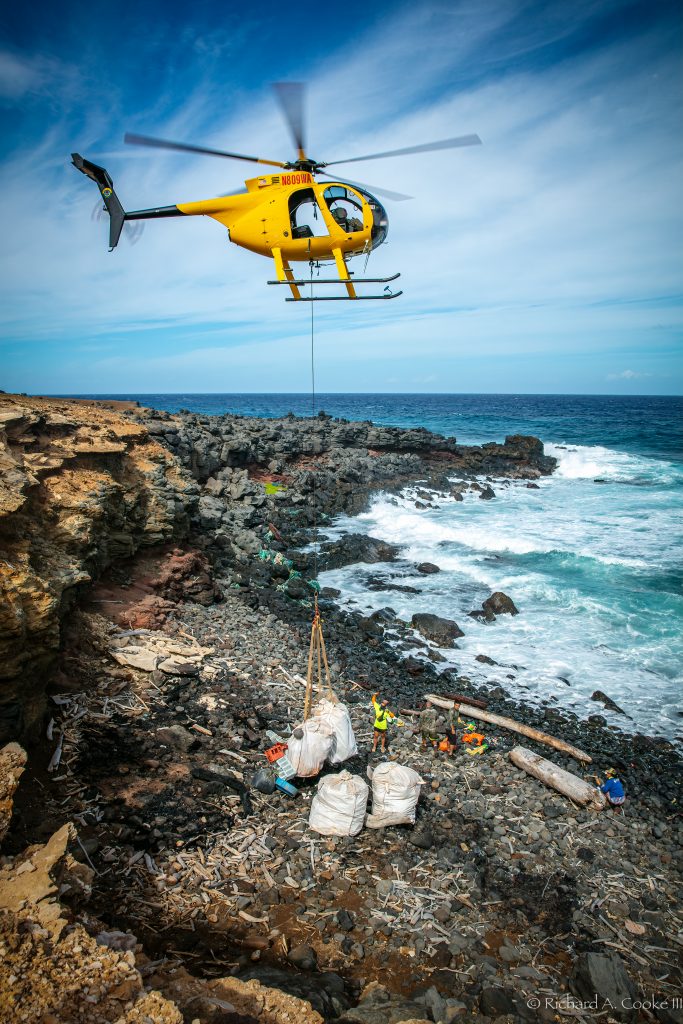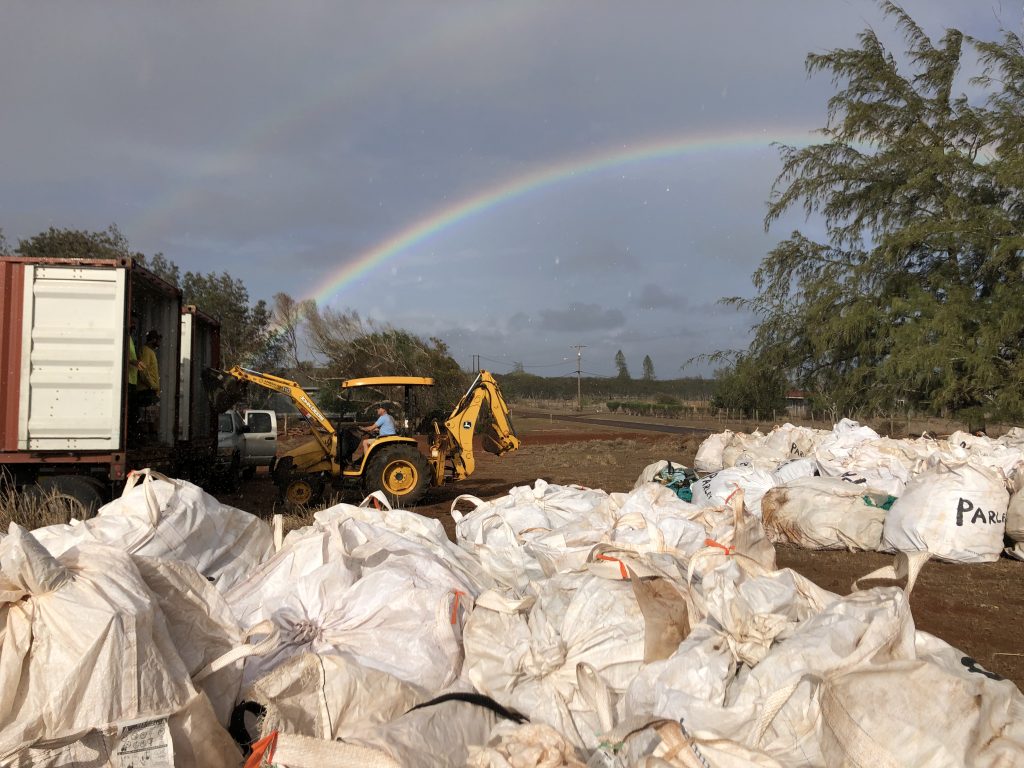46,000 Pounds of Marine Debris Removed from Molokaʻi’s Remote Beaches
The Nature Conservancy’s Hawaiʻi Chapter and partners removed more than 46,000 pounds of marine debris from Molokaʻi’s remote beaches at Mo‘omomi in the last quarter of 2020.
“We started cleaning the beaches more than 20 years ago,” said Wailana Moses, The Nature Conservancy’s Molokaʻi field coordinator. “This year, we were still able to remove a lot of marine debris in spite of COVID-19, thanks to our partners and community pulling together and doing the work in a safe, physically distant way.”
The Nature Conservancy’s Mo‘omomi Preserve and its adjoining beaches are home to rich coastal marine life, culturally important fishing grounds on which local families rely, and some of the most important green sea turtle nesting habitat in the main Hawaiian Islands. Mo‘omomi’s beaches are also a “hot spot” where thousands of pounds of marine debris, such as commercial fishing nets and plastic waste, wash in from all over the Pacific each year.
In the early years, volunteers and The Nature Conservancy staff carried all the waste out by hand on a grueling hike across the sand dunes of Mo‘omomi Preserve. Then it was loaded into trucks and taken to the local landfill. That changed five years ago when the Department of Land and Natural Resources Maui County Native Ecosystems Protection & Management division started helping with the beach cleanups and contributing helicopter time to haul the waste away.
Around the same time, Molokaʻi high school student Kamiki Agliam reached out to Sustainable Coastlines Hawaiʻi for help. With its support, marine debris is now gathered in large bags donated by ocean advocacy organization Parley, and shipped off-island in containers donated by Matson and Young Brothers, the bulk of which is burned at H-Power, Oʻahu’s waste-to-power facility.
The most recent beach cleanup yielded 133 bags of marine debris, filling two 40-foot shipping containers. Over the past five years, cleanups filled eight such shipping containers, totaling about 368,000 pounds (that’s two and a half times as heavy as the Space Shuttle, or about as heavy as six adult humpback whales).
“I estimate we’ve removed almost 1 million pounds of marine debris from Moloka‘i’s coastlines over the last 20 years,” Moses said.
Examples of marine debris include: commercial fishing gear such as gigantic fishing nets, buoys, buckets, traps and spacers; household items that include bottles, pens, toothbrushes, lighters, light bulbs, food containers and laundry baskets; plastic tubs, tires and propane tanks; and microplastics, which are tiny pieces of broken plastic items.
“Cleaning up marine debris is only a small part of what we do on Molokaʻi to steward our lands and waters so that both people and nature can thrive,” said Ulalia Woodside, Executive Director of The Nature Conservancy, Hawaiʻi Chapter. “The marine debris problem is getting worse, so we’re grateful to have support from the community and partners on both cleanup and, perhaps more importantly, raising awareness on how to change our behavior so we all generate less waste.”


















